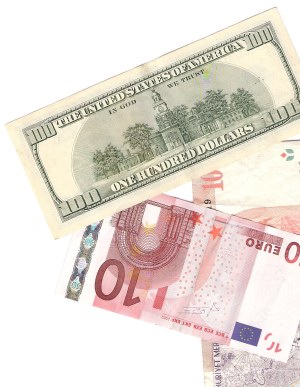|
|
Interest Rates and Economic Activity
 Clearly interest rates affect the volume of investment activity: the inducement to invest was declared to hinge upon a comparison of the marginal efficiency of investment to the borrowing rate on capital funds--or to the lending rate when the firm's own funds were used. (In perfect loan markets these two ought to coincide; in real markets they are likely to diverge.) It was contended that at usual levels the interest rate, by and of itself, is not a key investment deterrent. Yet after all is said, lower rates are likely to be more conducive to borrowing than higher rates. If the assertion of businessmen, when questioned on their behavior--to wit, that they expect to recover their investment on new equipment in not more than five years--is at all an accurate reflection of the facts, then the marginal efficiency of capital must lie near 20% to entice investment. * On the basis of this view, the common manipulations in interest rates are without practical impact--other than as evidences of the availability of financing. Nonetheless, in industries in which interest and depreciation allowances comprise a strong portion of current costs, changes are important. Consider situations in which the value of fixed equipment is $500 per $1 sales compared to $0.05 per $1 sales, say electric-power, gas, and railroad companies compared to retail stores. Even small changes in interest rates, of 1 to 2%, are likely to have striking effects on borrowing by the former. Moreover, the demand for funds for inventory carry-over by even a retail shop may be affected, for usually these holdings are financed by bank loans. A lower interest rate will enable it to carry a larger inventory, and perhaps gain sales thereby, for the same total interest charges as at a higher rate. Recognizing this, we must not be too quick to deride the economic potency of interest phenomena.
Interest rates are also capable of influencing the desire to save. When the volume of income is posited as a datum, although there are the exceptions noted earlier, savings ought to be positively correlated with interest rates, although the elasticity of savings to interest rate is likely to be low. Whatever the precise facts here, and they are rather elusive, evidence is strong that savings decisions are more responsive to changes in income than to interest rates. The effect of a high savings propensity is to dampen consumption ardor and to check the income level attached to each investment total; this was adumbrated in the discussion of the multiplier.
Dissaving phenomena, which were observed earlier as present at all income levels, can also be linked to the rate of interest: those who dissave may do so by disposing of capital assets, generally of claims to wealth. If these are fixed in terms of money, there will be two tendencies at work: high rates of interest which have persisted for some time past will have augmented the capital sum and will render current consumption expenditure easier. Simultaneously, higher current rates will make individuals more reluctant to spend for current consumption, particularly if future rates promise to be lower. This argument applies whenever we claim that individuals save more at higher, rather than lower, interest rates.
Considering the effects of interest-rate changes an individual capital-wealth positions, it is well known that for income-yielding capital assets, such as bonds, land, and houses, an interest rise will impair capital values. * Manifestly, those who own such assets will be better off with a fall in interest rate--if the expected income stream does not alter meanwhile. Immediately the interest fall signifies an automatic capital gain, whereas a rise would instantly create a capital loss. Owners of income-yielding properties, however, are also apt to be lenders. Conflicting tendencies are thus generated, namely the capital gain on the existing claims weighed against the income loss on new loans. The important elements involved are the size and dimensions of the potential income stream, the magnitude of the change in the rate of interest, and the annual amount of new lending. Where the latter is small, and the asset total large, an immediate benefit will accrue from an interest fall. † Where the opposite facts prevail, a fall is deleterious if not disastrous. Through time, of course, as reinvestment of funds released by bond redemption is undertaken, the interest decline will injure owners of claims. Although temporarily, however, the issue is always complicated by the augmentation of capital values, statistical evidence cited earlier shows the income fall experienced by lenders through the cut in interest rates over the last two decades: despite the unprecedented income expansion not only the relative but the absolute interest share in the national income has dwindled.
Purchases of durable consumer goods, such as houses and household appliances, are wedded rather strongly to interest rates. In purchases of a house, the interest on mortgage financing bulks large among the carrying charges. A 2% change on a mortgage indebtedness of $10,000 constitutes an annual sum of $200 or a monthly rental total of $16.66; for most income groups a total of this size cannot be belittled. Undoubtedly, the favorable 4% mortgage terms to veterans after World War II stimulated home construction and purchases that would otherwise have been stifled. On installment financing arrangements, interest charges may also be important, although the availability and repayment date, rather than the cost of installment credit (within the usual percentage ranges), often appears uppermost.
|
|
This website is created and designed by Atlantis International, 2006
This is an unofficial website with educational purpose. All pictures, and trademarks are the property of their respective owners and may not be reproduced for any reason whatsoever. If proper notation of owned material is not given please notify us so we can make adjustments. No copyright infringement is intended.